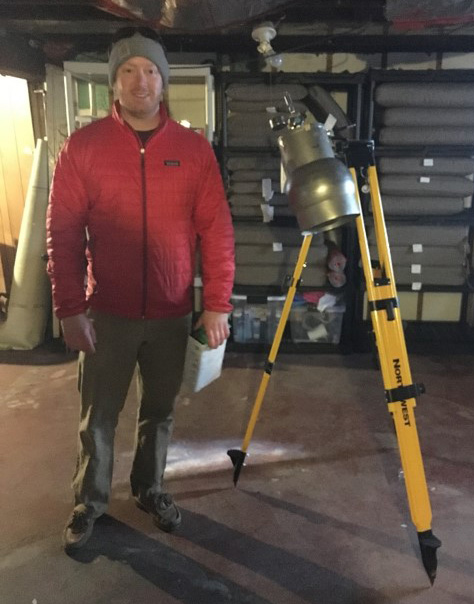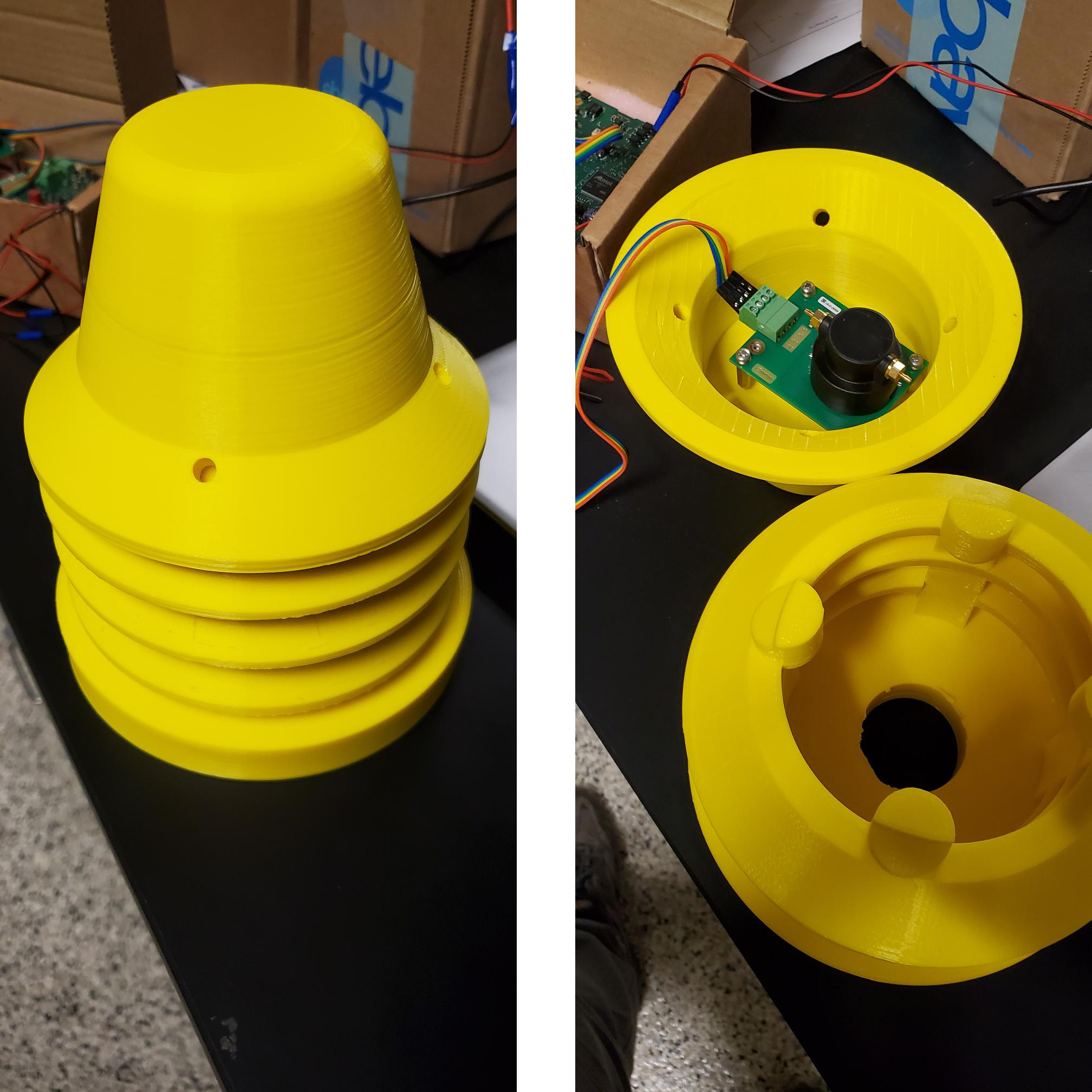Breathe easy: Detroit AirNet integrating community science with sensor technology to improve air quality
According to the World Health Organization, nine out of every 10 people around the world breathe unhealthy air. The health issues created by pollution and poor air quality range from respiratory diseases to heart attacks and strokes. Those most at risk include children and people in low- or middle-income communities.
When Detroit AirNet won the Wayne State University STEAM Challenge in April 2020, the plan was to build and distribute sensors to fill a void in available air quality data in Detroit, a city that has one of the highest preterm birth rates in the country - a health concern that has been linked to air pollutant exposure - and an asthma hospitalization rate more than three times higher than the rest of the state of Michigan.

The project's roots can be traced as far back as 2014, when Brendan O'Leary, who was earning his master's in geology from Wayne State, worked with the Detroit Medical Center, Henry Ford Health System and the Wayne State School of Medicine to create geostatistical air pollution models for the city.
"I knew after doing this modeling work that we still had a long way to go in terms of getting air sensors out in the city and understanding the variations between different neighborhoods," said O'Leary, who leads Detroit AirNet - an interdisciplinary team of Wayne State University students - as he pursues a Ph.D. in civil and environmental engineering.
As building sensors proved to be very difficult to accomplish in a virtual environment caused by the COVID-19 pandemic, the team pivoted to becoming a community science platform with a series of other projects.
In the fall of 2020, the Ecology Center, an Ann Arbor-based nonprofit, submitted an application for a grant from the Erb Family Foundation with the support of Detroit AirNet. This grant was awarded to the Ecology Center, and Wayne State's Detroit AirNet team won a $40,000 subcontract to conduct an audit of historical and current air quality datasets and sensors in the Detroit area.
With the help of Katherine Akers from the WSU Shiffman Medical Library, the team is finalizing an academic review paper of all metro Detroit air quality datasets from 1952 to 2020. They have also established a partnership with the Detroit Air Quality Sensor Learning Collaborative, which represents local nonprofits, universities, and state and federal agencies.
While collecting technical data was valuable, community input - particularly from those who are historically underrepresented - became central to the pursuit of Detroit AirNet's mission of creating tools and information to mitigate the negative impact of air pollution. An air quality management survey was conducted in January 2021 to gauge the public's knowledge, opinions and levels of concern regarding air quality.
"I thought it would be great for community members and Wayne State University students and faculty to come together and collaborate on air quality issues," said O'Leary.
According to Timothy Dittrich, assistant professor of civil and environmental engineering at Wayne State, empowering citizens through education is a foundational principle of community science.
"Engineers can learn a lot from going into the community and asking questions, and the community can benefit from data and resources like Detroit AirNet to have discussions that are less professorial," said Dittrich, who oversees the upstart Society of Environmental Engineering and Sustainability (SEES) student organization, a key partner of Detroit AirNet. "If you're going to help people, you have to value what the community actually cares about. I think that's one of the most innovative things that Detroit AirNet has done."
Taking a community science route has made the versatile skills of Detroit AirNet members even more beneficial. Allison Lucas, a Ph.D. student in communication, led the outreach survey. Gelareh Raoufi, a Ph.D. student in learning design and technology, is putting together new educational tools. Alex Hill, geographic information systems director in the Center for Translational Science and Clinical Research Innovation at Wayne State, is leading data visualization efforts.

Of course, the original goal of sensor development and implementation is still in play as the weight of the pandemic begins to lift. Dimitrios Kakaris Porter, an undergraduate student in civil and environmental engineering, is conducting lab experiments on both high-end sensors and low-cost options to measure and compare accuracy and volume of data collected, and answer questions regarding spatial needs.
"Determining the variability within the city - do you need sensors every six feet, or every block? - has been another important ongoing project," said Dittrich.
Moving forward, Detroit AirNet hopes to develop a deeper relationship with the city, which has made air quality a priority in recent years. Mayor Mike Duggan established the Detroit Office of Sustainability in 2017; two years later, the Detroit Climate Action Plan was launched as the guide for the office's agenda. Out of the 43 actions set forth to achieve 10 goals, expanding a local air quality monitoring system was number six.
Air quality sensors in the city, operated at both the federal and state levels, are limited to several isolated locations and do not offer enough information to create solutions at the neighborhood scale.
Detroit AirNet intends to use EPA-designed sensors called SPods that can be mounted along fence lines. These devices contain anemometers that help provide directional concentrations of such pollutants as volatile organic compounds (VOCs) found in paints and pesticides.
According to O'Leary, offering a low-cost option can scale up operating sensor networks more quickly, and give citizens and civic leaders the ability to make more informed decisions based on available data.
"You can't run away from air," he said. "There are ways you can mitigate exposure routes in groundwater. It's very hard to mitigate air pollution exposure other than to have better air quality, period."
Visit detroitairnet.wixsite.com/info to learn more about Detroit AirNet, or contact the team at detroitairnet@outlook.com to volunteer or seek new collaborative opportunities.